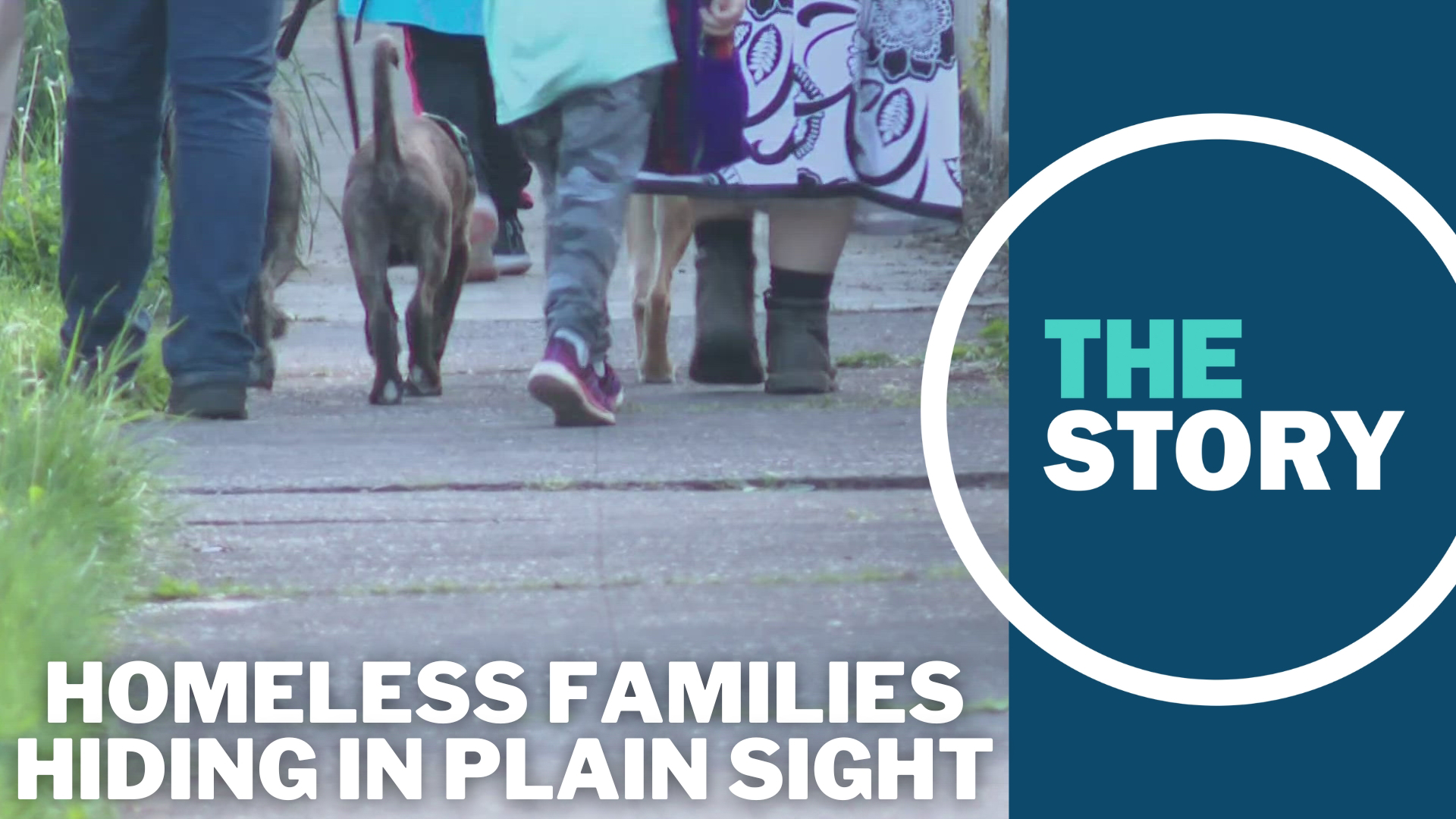PORTLAND, Ore. — When Multnomah County released the results of its annual "point-in-time" count of the homeless population last week, children without shelter accounted for roughly a third of the total increase in homelessness within the county.
Yet homeless families and youth tend to be invisible, and that's often on purpose. Parents keep their campsites hidden deep in the woods or stay on the move.
KGW's Blair Best recently spoke with one of these homeless families. While they were willing to be on camera, they did not want to show their faces for fear that the state would take the children away.
Hiding in plain site is a survival tactic that this single mom, who goes by "B," has honed throughout her time on the streets.
"We were in and out of shelters for a while ... I lived at a DV (domestic violence) shelter for more than a year and there was drug use in the shelter — we were surrounded by it," she said.
So she and her two young children moved to the only place she felt safe: a tent deep in the woods near Gresham.
"We found a place in the woods, stayed safe, we had our dogs — like, people weren't allowed to come and mess with us," B said.
They also spent some time camping under the Hawthorne Bridge.
"And you'd see some tweaker walk by and all of a sudden it was 'tent time!'" B said, clapping twice. "That's what we did, it was clap, clap, tent time. They heard that around the camp, they ran to the tents."
Her kids learned hypervigilance early on. They lived this way for about a year — homeschooled, their mother said, outside and away from the structures of society.
"Um, I honestly thought it was really nice because like, we lived in a little wooded area away from all the drug addicts and we always got to run around," one of the children said. "I used to play my little imagination games in my own little world, it was really fun."
"I was teaching them to read and write on my own, but now they're in public school and they're absolutely loving it, but they feel a little bit like outcasts," the mother said. "They're 'outside kids,' that's what they call themselves."
Currently these "outside kids" live inside, in affordable housing. But their mother thinks the complex is unsafe.
"I'm surrounded by drug dealers and drug addicts and there's no peace," B said.
They're preparing to get on the move again, back to the outdoors.
"If it weren't for the fact that there was a roof over my head, I would rather be outside," one of the children said.
In Southeast Portland is Path Home, one of the three homeless shelters for families in Multnomah County. There they use trauma-informed architecture and design to bring the outside in.
"Some of the features of trauma-informed design and architecture include a real connection to nature, so that's real plants indoors and outdoors, natural materials, natural light," said Brandi Tuck, executive director of Path Home. "When you drive around Portland and see tent villages and RVs everywhere, you don't realize that there are thousands of kids with their parents without homes too. They're the invisible homeless population that hide for fear of something happening to their kids or the state taking their kids away."
Right now there are 800 homeless families with children on housing waitlists in Multnomah County. Last year Path Home served 1,800 people, and more than half of them were children. A majority of the children were under the age of five.
"The children that experience homelessness today can turn into the chronically homeless adults of the future, so unless we do something now to help these kids, we'll never be able to solve the issue of homelessness in Portland," Tuck said.
"Taking my kids from me and putting them in foster care is not what's going to keep them safe," said B. "Putting us in shelter situations where we can't regulate who's around us that's not going to keep us safe."

